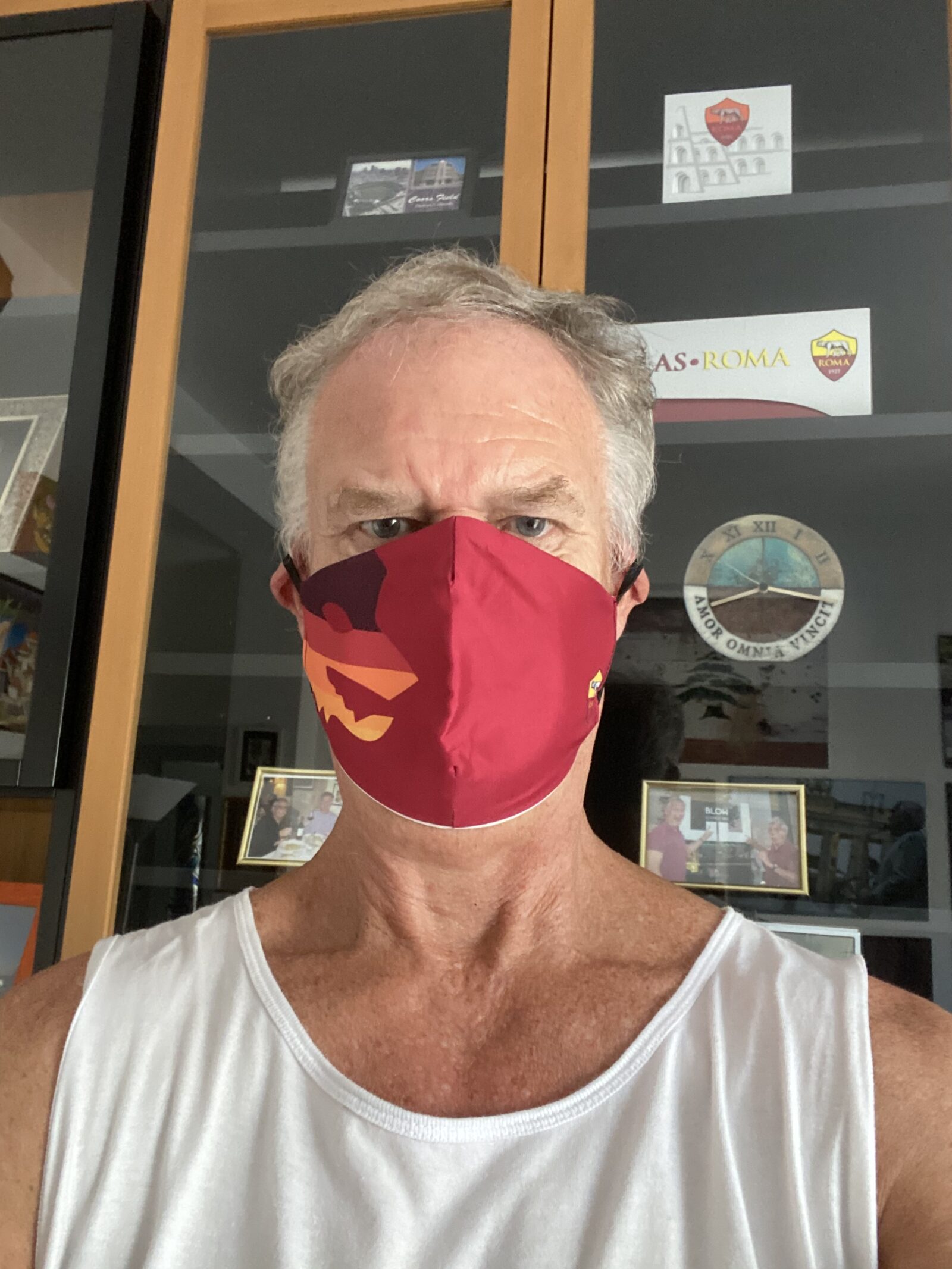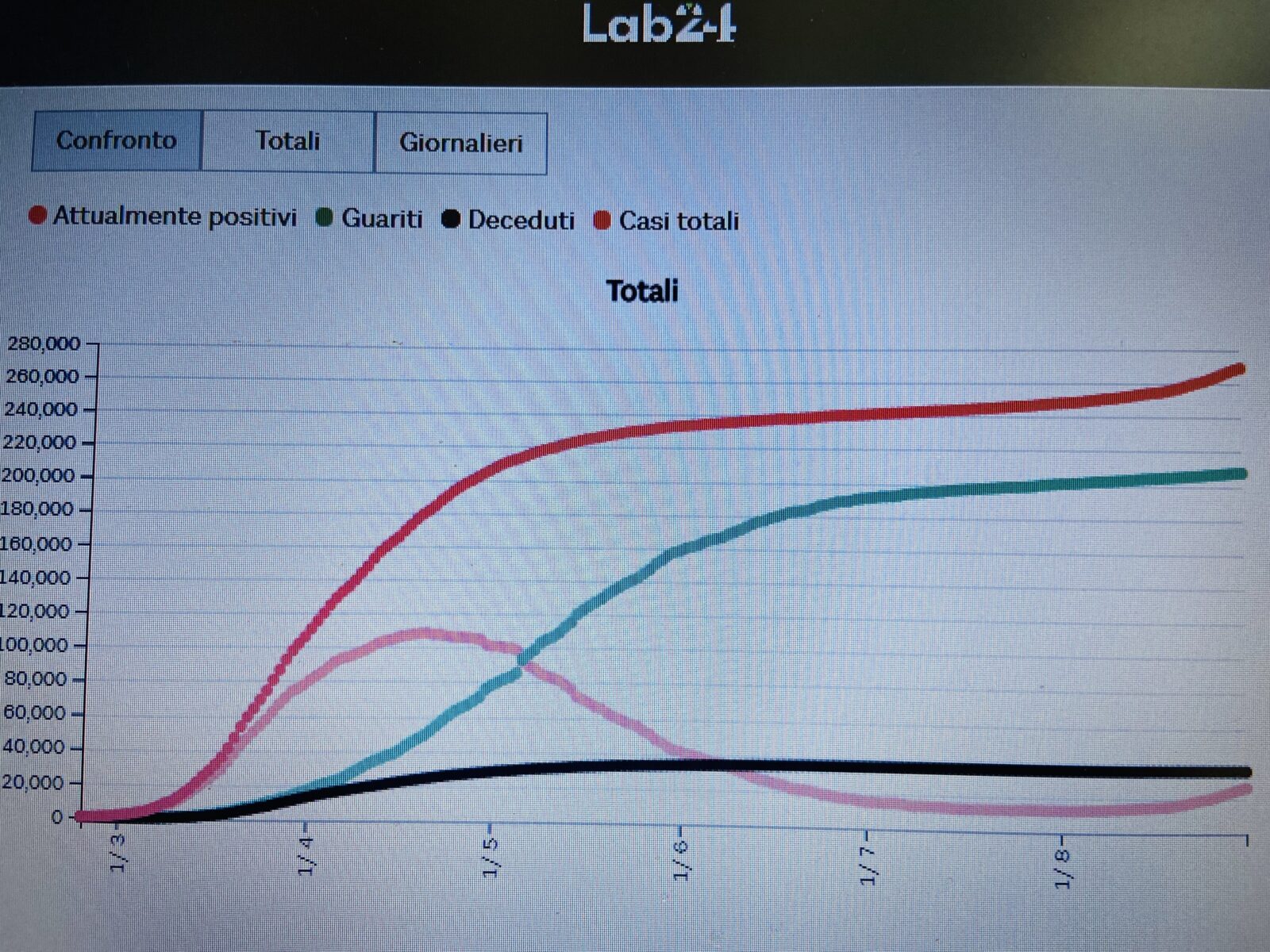Covid-19 making a slight comeback in Italy and officials are clamping down again

Rome police are fining an average of 10 people a night over Covid-19 violations. They aren’t starting fistfights over masks. They’re not starting riots in front of government buildings.
They’re merely not wearing a mask in public at night.
Five hundred guests at a resort in Sardinia are in quarantine after a staff member tested positive. Six regions in Italy have delayed the opening of school past the scheduled date of Sept. 14. Rome’s Fiumicino Airport is swabbing every passenger on Rome-Milan flights.
If you recall, I have trumpeted Italy for transforming itself from the Covid hotspot of the western world to a model for fighting the virus. Our lives here were about normal again. Our fears were few. As the rest of the world burned, we went to the beach.
Well, Covid-19 is back — almost.
I won’t call it a second wave, but Italy is seeing a return of the virus that went on and shredded many other countries like grated parmesan. It had already poleaxed our travel for the summer. Marina and I had trips cancelled to Spain, Germany, Puglia and Greece. We managed to reschedule Puglia in July and flew there with no problem.
Traveling out of Italy was a different matter. I checked into Malta but all flights from Italy were cancelled. We tried to reschedule Skiathos, Greece, but no flights were allowed from Italy, either. My housekeeper has tried to return home to Ukraine and all flights from Rome have been cancelled since May.
We settled on an August road trip to Molise, Italy’s least-visited region, on the Adriatic. I want to take a solo trip this month to Calabria, the toe of Italy’s boot. Then, like an unwanted drunken uncle, Covid-19 came back to Italy.

In the last seven days, Italy has averaged 1,274 new cases a day, the fourth straight week it has increased. From the week of June 25-July 1, about in the middle of Italy’s flattened curve, it averaged 196.
Rome’s Lazio region has averaged 157 after averaging 11 the last week in June. Metro Rome’s numbers are 124 and eight, respectively. The increase in cases, most of which are asymptomatic, is due to increase in testing but the percentage of positive tests has also increased.
Compared to the U.S.
Keep in mind this is not the Covid dumpster fire that is the United States. In the last week the U.S., with less than six times Italy’s population, has averaged 42,267 cases and 952 deaths — and those averages are actually going down. With only 4 percent of the world’s population, the U.S. is still holding steady with 24 percent of the world’s cases and 22 percent of the total deaths.
Over the last week, Italy has averaged only six deaths a day. That many have likely died in Florida since you started reading this blog.
Still, the wee Covid bump has many of us in Italy nervous. Marina and I worried that the government would impose another regional lockdown. When they imposed it in March, it worked like a vaccine. We thought we’d be hiking in Molise and unable to return without going into quarantine for 14 days.
I told an Irish friend taking his girlfriend to Alto Adige in the Italian Alps that the regional borders may close and he said, “But what a great place to get stuck.” As it turns out, the government did not close the borders and my friends went up and back with no problem. They also had great wild boar ravioli.
More nervous than anyone is the Italian government. Ranieri Guerra, Italy’s representative to the World Health Organization, was quoted in Rome’s Il Messaggero newspaper last week saying, “Italy reinforces the sanctions or 4,000 cases will arrive.”
Increase expected
I expected a bump. Italians love the sea in summer and I knew once the curve flattened and they were allowed to travel something bad would happen. Sure enough, many of the new cases have been traced to vacation spots. Besides the resort in Sardinia, 60 people in Sardinia’s famed Billionaire club tested positive. Its owner, infamous businessman Flavio Briatore, is being treated for the virus in Milan. About half of Lazio’s cases came from Sardinia.
But not all. About 20 percent of Italy’s cases were linked to international travel. The week we were scheduled to fly to Skiathos, a woman returned to Rome from the same island (via Athens) and tested positive.

Italy’s government has gone into high alert. In mid-August the Italian government closed down the country’s discoteches and dance clubs on the beach. They imposed 400-euro fines on anyone caught without a mask in public between 6 p.m.-6 a.m. The government is testing 80,000-90,000 a day compared to 60,000 a day in July.
“But it’s not sufficient,” Andrea Crisanti, a renowned microbiology professor at the University of Padova who has been involved in patient testing since near the beginning, told Il Messaggero, “because we must aim above all to be ready when they reopen the schools and inevitably there will be an elevation of the transmission of the virus.”
The government hopes to test 300,000 a day at a cost of about 40 million euro. If the experiment with testing on the Rome-Milan flights works, they’re hoping to implement it for Rome-New York and Rome-Dubai flights. It will carry the slogan, “One plane ticket, one swab.”
Covid-19 worsens recession
The Italian economy, already in its biggest recession since World War II even before the pandemic, is getting worse. The third largest economy in Europe saw its gross domestic product fall 12.8 percent in the second quarter from the first quarter and 17.7 percent from the same period last year, according to ISTAT, the Italian government’s statistical arm. The Local, Rome’s lone English-language news source, reported that the economy shrank 5.4 percent in the first quarter and household spending dropped 11.3 percent in the second quarter while exports dropped 26.4 percent.
The country has already lost 16 billion euros in consumer spending in 2020, a drop of 10.9 percent.
Walking around Rome last month, I didn’t need statistical charts to see the devastation. Italy, along the rest of the EU, is only allowing 10 countries outside the continent and the major tourist providers from China, Russia and the U.S. are not among them.

My soccer bar, Abbey Theatre Irish Pub, has no problem with social distancing. So few tourists wander in, only every other barstool is occupied. My favorite Centro Storico bar, Bar di Fico, had only a couple tables occupied on a sunny Saturday afternoon. The streets are nearly void of traffic.
A few more people, buoyed by the flattened curve over the summer, are walking the streets without masks. But the percentage who are masked still runs about 80 percent and, unlike in the U.S., no one without a mask calls in a nuke strike when they’re denied entrance. My gym, which re-opened in May, makes every person give their temperature and contact info. It hasn’t recorded one person over the line or later test positive.
It is now September, the best time to be in Italy. Marina and I follow the Covid curve every day, hoping it’ll flatten enough to stretch our wings again. Remote mountain trails in Molise; sandy beaches in Calabria. Following the curve in Italy is like following the stock market.
So Italy isn’t shutting down. Call this a bump, a small spike. It’s not a second wave. Our biggest adjustment has been finding stylish masks to keep up with the crowd. After all, this is Italy. But we’re back on our toes. Italy beat the crap out of Covid-19 over the summer.
Now it’s just coming back for a little revenge.

